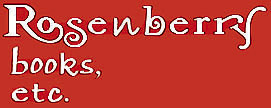About Fraktur
Fraktur was, in its time, an art like quilting, weaving or singing. People made fraktur for themselves and for each other. Someone in the community might have a particular talent and would serve his or her neighbors by making and teaching fraktur.
(With t)he industrial revolution … easily printed images of the culture-at-large pre-empted the unique creativity of this folk art. The traditional visual symbols — tulips, stars, angels, etc.— were replaced by American motifs — eagles, flags, etc. “This change in content … destroyed home-made, rustic, do-it-yourself fraktur as it destroyed other traditional arts and crafts in the United States,” writes fraktur scholar Don Yoder in .
The Skilled & The Innocent
… What a loss! Look at early fraktur — a thousand repetitions of birds, angels, and flowers — but what vitality and variety in expression. The work of the skilled hand and the innocent hand can be equally wonderful. The verses and hymns might be written with the flourishes of a skilled calligrapher or decorated with polka dots. Fraktur is a liberating art form, an art form for all kinds of folk.
Fraktur is an art of repetition and emulation. This repetition was at first done entirely by hand, but eventually mechanization was mixed with handwork for those who wanted the assistance of a printed form.
A Modern Fraktur
… Can fraktur-making have a revival such as quilting has had? This book presents new fraktur for a modern reader. The fancy lettering is legible, without the archaic letterforms and obscuring decorations of many early pieces. In addition, most fraktur had been written for German readers in America, but this fraktur is in English.
Those familiar with fraktur will see some familiar forms. These are not the same sheep and angels you have seen before, for they are newly drawn. You may, however, recognize in them the familiar look of a pictorial “ancestor.”
The Teacher’s Gift
Fraktur, as a North American folk art, blossomed in the Pennsylvania German culture from pre-revolutionary times.
… All stages of life were celebrated with fraktur. Birth, baptism, courtship and marriage, and death were decoratively documented. Yet it was in the schools that much of the known fraktur was created. The greatest practitioners of fraktur were schoolteachers.
Pennsylvania Mennonite schoolmaster Christopher Dock, who taught during the mid-eighteenth century, created fraktur to teach and reward his students. He wrote that when a child succeeded at learning his ABC’s “his father owes him a penny, and his mother must fry him two eggs for his industry. But when he begins to read I owe him a certificate.” To encourage older students to help teach the younger ones, “I ask who will teach the child … for a motto or a bird.” And to the child “who has pointed out the greatest number of letters, I owe something, perhaps a flower drawn on paper or a bird.” 1
Schoolteachers hand-decorated elaborate bookplates and title pages for students’ copybooks and hymn notebooks as both example and encouragement. These “Vorschrift” were inspiring testaments to the schoolmaster’s devotion to the sharing of knowledge and his love for his students.
An Inclusive Artform
Schoolteachers were men, and most fraktur was created by men. Yet, unusual for its time, fraktur was an art that was also practiced by women…. Fraktur was often an unsigned, anonymous art. Fortunately, we do know the names of some women who were prolific fraktur artists. Many bold and cheerful images by Canada’s Anna Weber are collected in Ontario Fraktur by Michael S. Bird. 2 Susanna Hübner is said to have produced some of the finest examples of fraktur created at the Pennsylvania Schwenkfelder community in Montgomery County. 3
Henry Chapman Mercer, the nineteenth-century pioneer in the study of American folk art, discovered remnants of Pennsylvania-German creative activity in a Pennsylvania garret. Henry Mercer’s enthusiasm for fraktur added early momentum to the fame it has gained in the modern world. The Mercer Museum is one of a number of fine institutions with fraktur collections that are listed at the back of this book.
Most fraktur-writing … presented religious writing or biblical verse. On All My Holy Mountain contains new fraktur with traditional intent. The Peace Churches are current and flourishing: they are united in their devotion to manifesting spiritual, communal and political peace. To their witness the Peace Church edition is dedicated.
1 Frederick S. Weiser and Howell J. Heaney, Pennsylvania German Fraktur of the Free Library of Philadelphia, Volume One (Philadelphia, PA: The Pennsylvania German Society and The Free Library of Philadelphia,1976), p. xix.
2 Michael S. Bird, Ontario Fraktur: A Pennsylvania-German Folk Tradition in Early Canada (Toronto: M.F. Feheley Publishers, 1977).
3 Weiser and Heaney, p. xxvii.


